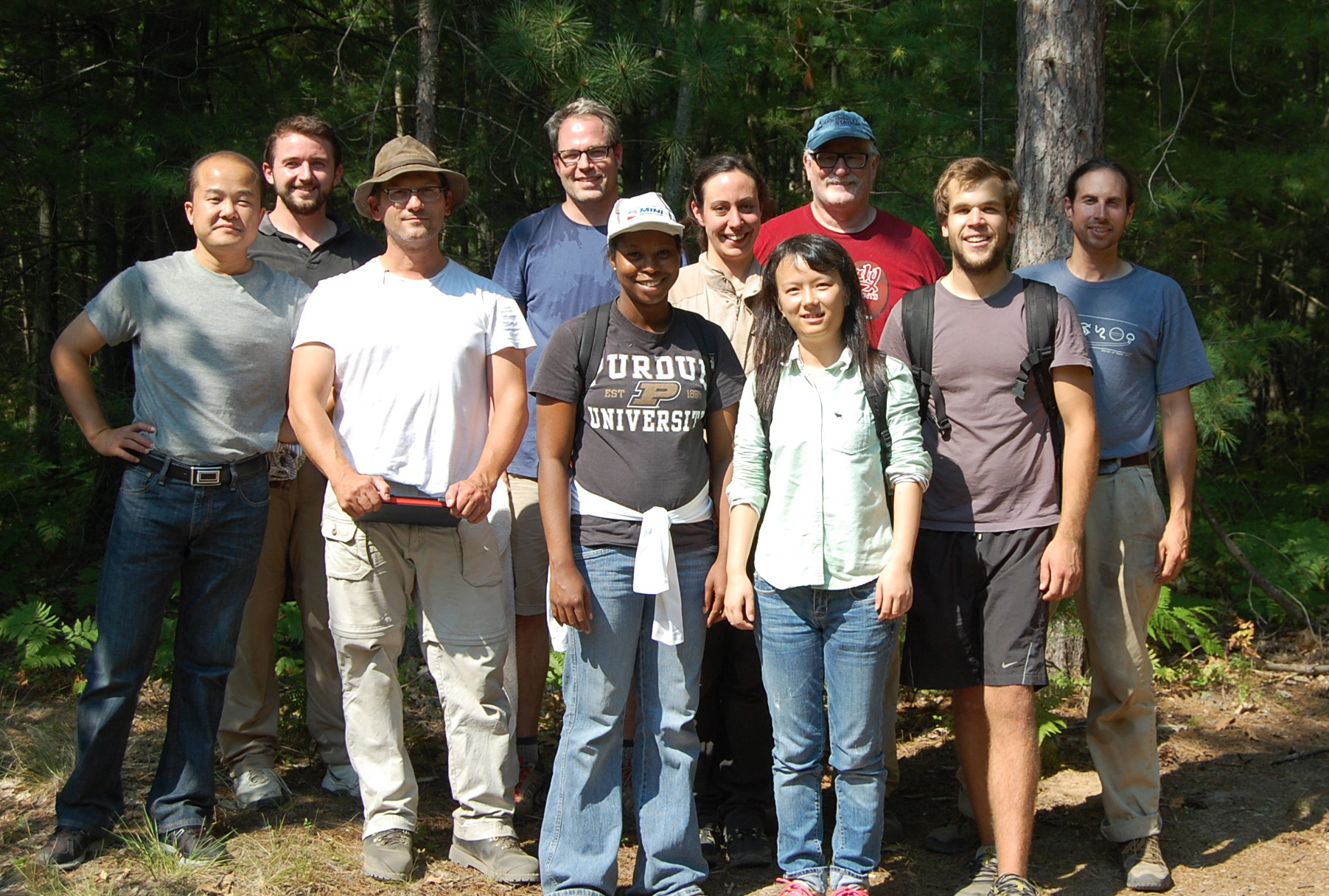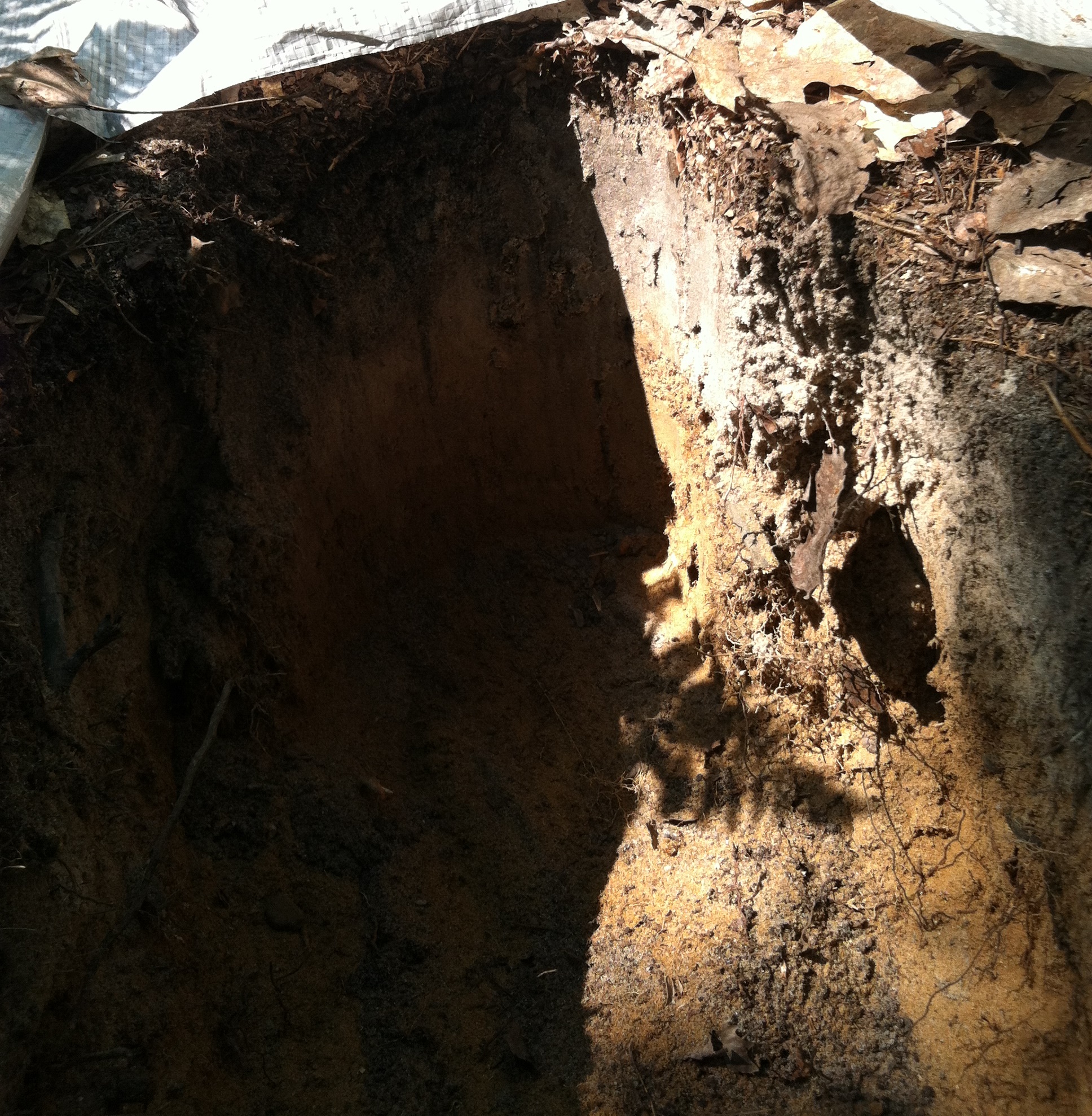Christy Gibson

Earth, Athmospheric & Planetary Sciences
Mentor / Lab:
Dr. Tim Filley
Specific Research Area / Project:
Linking the Chemical Structure of Black Carbon to its Biological Interactions in a Northern Temperate Forest Soil
Undergraduate Institution:
Tennessee State University
Research Profile:
My research focuses on the impact of black carbon (the product of the incomplete combustion of biomass) on carbon cycling in a boreal forest. Fire is a major controller of carbon in these ecosystems and with projected increased fire frequency, we can expect greater deposition of black carbon on the forest floor and emitted into the atmosphere. My goal is to clarify how the physiochemical properties of black carbon (BC) produced at different combustion temperatures affect its reactivity in the environment, and how this in turn affects carbon cycling and stabilization as well determining which soil organisms are responsible for cycling BC carbon versus native soil carbon using stable isotope techniques.
My broader research interests include the application of stable isotopes as a tool to answer lingering questions about plant-microbial interactions in the rhizosphere, to track organic compounds and pollutants in soil and sediment and potential application of geochemistry techniques in astrobiology research.

About Me:
I was born and raised in Nassau, Bahamas and while I lived in a vacation hotspot, I wanted very much to study abroad and then go to medical school before returning home to be a contributing member of society. This desire took me to Nashville, TN and to Tennessee State University where I was first introduced to the world of scientific research. I have always had a natural curiosity about how the world worked on the tiniest of scales and once I found out just a little in my Physics, Chemistry and Cell Biology classes, I also realized that in our efforts to become more efficient, we have altered our environment to suit us and as a consequence, destroyed ecosystems that belong to other organisms.
Instead of continuing my education in Chemistry after I completed my undergraduate degree, I decided to pursue a degree in Plant and Soil Science which gave me a profound appreciation of the biochemical processes responsible for plant response to environmental stresses. I wanted to observe these interactions between plants and soil more in depth and the implications of these interactions in the overall scheme of things from an environmentalist’s perspective. But, where does someone with a mixed background and barely any experience in soil biochemistry or environmental science go to become an environmental scientist or engineer? By chance, I was referred to Dr. Lee and introduced to the ESE program which is at the center of interdisciplinary, collaborative research in ecological and environmental sciences. This program fits me, my background and career goal perfectly and though I’m not quite sure what’s next, I know that with the training, opportunities for networking and professional development offered by ESE, I’ll be able to design research plans, draft policy or communicate findings to answer those lingering questions and meet the challenges of an ever expanding global community.
Awards:
- Purdue Doctoral Fellowship 2011-2013
- Purdue Women In Science Program Travel Award Recipient 2013
Publications:
- Gibson, C, Aziz N.A , Effects of Temperature Stress on Solanum Host for the Spread of Soft-Rot Infection, Proceedings of the Southern Nursery Association Annual Research Conference, Mobile, AL 466-469. 2010
Presentations:
- Gibson C, Berry T, Wang R, Bird J, Blanchette R, Johnston C, Filley T (AGU 2013). White-rot fungal response to fresh and artificially-weathered pyrogenic organic matter. Poster presented at American Geophysical Union 2013, San Francisco, CA.
- Gibson C, Berry T, Wang R, Bird J, Blanchette R, Johnston C, Filley T (September 2013). Priming effects of black carbon additions on carbon mineralization in malt extract media by the white-rot fungus, Trametes versicolor. Poster presented at American Chemical Society 2013, Indianapolis, IN.
Leadership:
- Purdue Ecological Sciences and Engineering 2012 Symposium Speaker Chair
- Purdue Ecological Sciences and Engineering Peer to Peer Mentor Fall 2012 – present
- Purdue Women In Science Program Mentor Spring 2012 – present
- Coordinator of Purdue Condensed Aromatic Carbon Group Fall 2012 - present
- Purdue Interdisciplinary Gradaute Program Student Association - Ecological Sciences and Engineering Representative Fall 2013 - present

